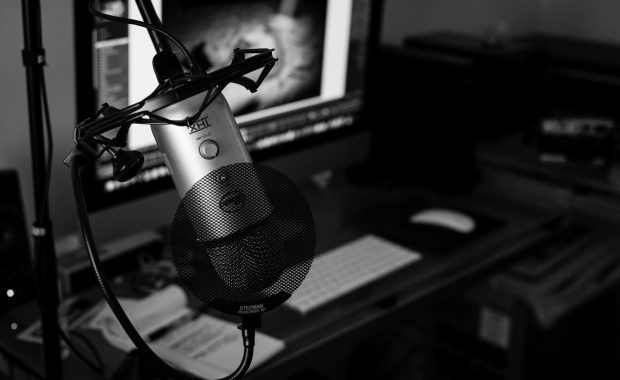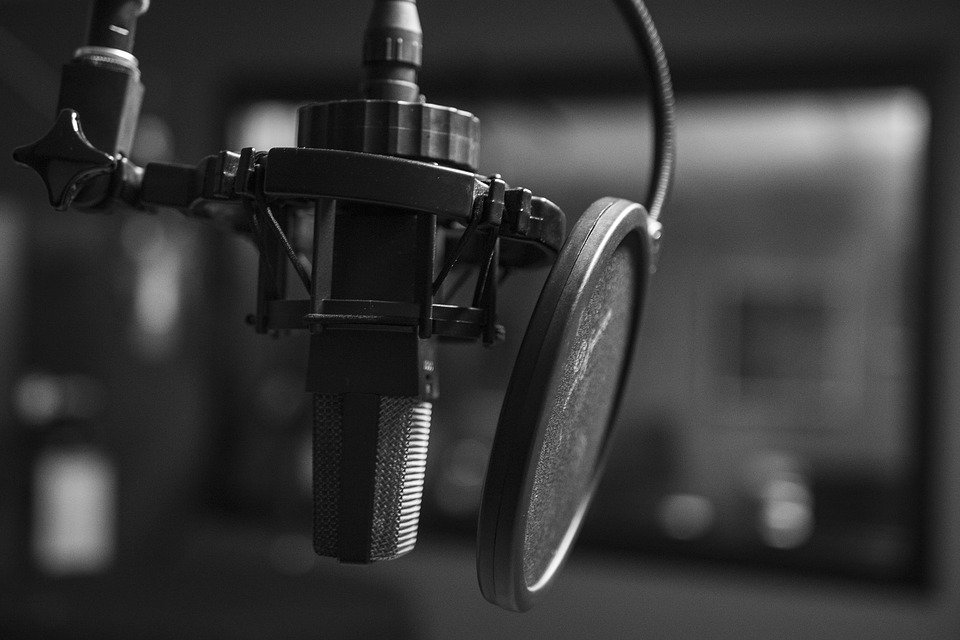Vocal tracks are sometimes the loudest, most prominent part of your mix.
They’re the one element in music production that artists of all genres agree deserves special care and attention.
However what really makes an amazing vocal track? The singer and performance are essential, but there’s one other key factor that goes into all great vocal recordings.
Here’s the hard truth for you: there’s no substitute for the right mic—especially when recording vocals.
Good microphone choice often means the difference between a smooth mix process and a frustrating struggle.
It sounds tough, however, it’s not meant to be discouraging. If you understand what’s at stake and the issues that matter most, you’ll never worry about mic choice again.
Vocal recording is demanding on your gear
Getting the biggest, clearest, and strongest vocal sound puts lots of pressure on your gear.
In a professional studio, you’ll be singing inside an acoustically treated vocal booth. If you’re recording at home you’ll be utilizing the DIY version.
This kind of environment ensures that your vocal tracks don’t have any extra noise or boomy room sound to distract from the singer.
And if you need that larger-than-life studio sound, you’ll want to benefit from the proximity effect by singing up close to the mic.
Under those conditions, there’s nothing between you and your microphone to alter your sound.
When you’re recording an instrument or a synth you can simply change the tone you use or the position of the microphone to get a different sound.
However, when it comes to vocals the only tools you have are your own voice and the natural tone of your mic.
If the mic you select doesn’t compliment your sound, it’ll be obvious right away as you listen under the microscope.
Unfortunately, those negative results only get worse during your mix.
Mixing tools only go so far
You might assume compression and EQ plugins are all you need to rescue a bad vocal recording.
However, relying on these methods instead of fixing the root of the problem will add hours to your workflow.
It’s true that you can improve the sound of a raw vocal with EQ and compression—particularly when it comes to making it fit into the mix.
However, you’ll be able to never completely change the basic features that come from the tone of the singer’s voice, the environment where you recorded, and the qualities of your microphone.
Music production tech is getting more sophisticated by the day. Problems that used to be considered impossible are easy to overcome for modern producers.
However, even when these advanced solutions can help, getting it right the first time always sounds better and extra-musical.
You can’t go back in time to change the microphone
After an excellent performance from a great vocalist, the biggest factor in a good vocal sound is the microphone.
Each mic has a unique character that can compliment a singer’s voice when chosen well—or trigger issues when it’s not the proper match.
Consider the sonic differences between a dynamic mic, a ribbon mic, and a large-diaphragm condenser. Engineers use each microphone type in several situations to get the perfect outcomes.
The same concept applies to vocal microphones.
Matching the microphone to the singer is one of the most essential jobs in vocal production. However, getting it right is simpler said than done.
It’s too hard to predict how any vocalist will sound until you get them in front of a microphone. Whenever you record your own voice, it’s even more difficult.
The only way to really know is through trial and error. However, you’ll be able to hone in on the best choice by narrowing down your choices.
Here’s a helpful quiz from Shure that takes some of the guesswork out of microphone choice.
The right mic makes mixing easy
An awesome vocal shouldn’t need dozens of inserts to work in a track.
Actually, a well-recorded vocal will let the natural sound of your voice speak within the mix—all you need to do during vocal mixing is help it along.
With all the unique characteristics that come from your selection of microphones, you’ll be able to cut your work in half by starting off with the right sound.
The trick is to think about your mix before the vocal recording session even starts.
Try to think about how you want your vocals to sound, and what qualities you might need to emphasize in your mix.
For instance, a bright soaring pop vocal naturally needs a lot of high ends, while an intimate folk song might name for a warmer, woodier tone.
If you understand what you need for your end outcome you’ll have a lot easier time choosing the right mic.
The right mic choice
Too many producers have to learn the hard way when it comes to microphone choice.
If you’ve ever struggled with a vocal that just won’t sit right, you understand how essential it is to start with good raw materials.
With a little foresight and a solid grip on the basics, you can make educated mic decisions for a greater vocal sound.


